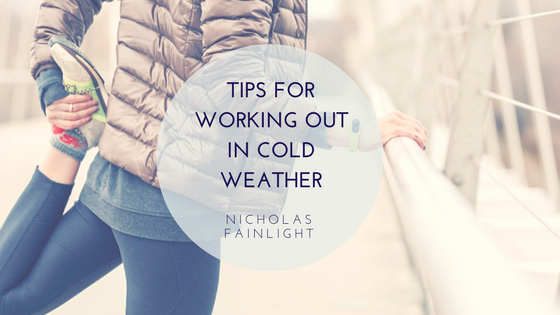Colder weather doesn’t have to mean the end of your outdoor workouts. When the snow begins to fall, you don’t have to trade the fresh air and gorgeous scenery for the sweaty and cramped interior of your local gym. With a few simple measures to keep yourself safe and comfortable in chillier temps, enjoying your outdoor workout is more than possible.
Pay Attention to the Weather
Before heading outside, always make sure to check the forecast. Wind chill can make a cold day even more frigid, so knowing what you’re heading into is critical. Even if the temperature reads above zero, wind chill can easily bring it down into the negative numbers. In these conditions, frostbite can occur in under 30 minutes. Checking the forecast will allow you to prepare yourself by dressing properly and planning an appropriate amount of time for your workout.
Wear Layers
Dressing appropriately is critical to enjoying your outdoor workout. Wearing layers will insulate your body against the cold, but also allow you to remove clothing should you get too warm. When you actually start moving, especially during higher intensity exercise, your body generates a considerable amount of heat. To avoid sweating too much, layers of clothing can be removed. This will help keep you from excessive sweating which may lead to unnecessary heat loss.
Avoid Cotton
When you suit up to head outside, avoid wearing clothing or gear constructed from cotton. Instead, choose synthetic materials that wick moisture. Wool is also a great layer option for keeping you warm since it won’t absorb sweat and conduct heat away from your body. Cotton tends to get damp quickly when you sweat. This can lead to increased heat loss as it no longer insulates you from the cold and wind. In fact, it starts to pull heat away from the skin. To protect yourself from this, choose an outer layer that is waterproof to protect yourself from outside moisture and wind.
Cover it All Up
The body loses a considerable amount of heat through the head, so covering it up is critical. Opt for hats that are made from synthetic material or wool to wick moisture from the scalp. A cotton hat can get sweaty quite quickly, making you uncomfortable and cold. Make sure to wear gloves as well. Fingers and toes are the most susceptible to frostbite, so making sure they are properly insulated is important. To properly insulate your toes and feet, throw on some warm wool socks prior to heading out. Just make sure that your shoes or boots are roomy enough to accommodate the extra fabric. Constricting your feet too much can cut off necessary blood flow, setting you up for misery. Be sure to pay attention to any skin numbness or burning you may feel as these are signs of frostbite. Always listen to your body and head inside if you feel out of sorts.
